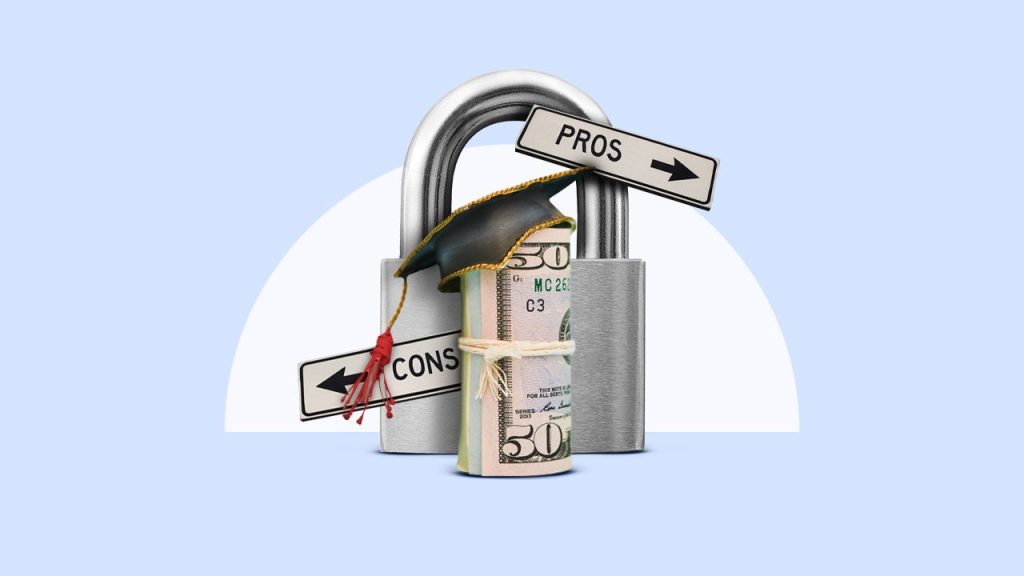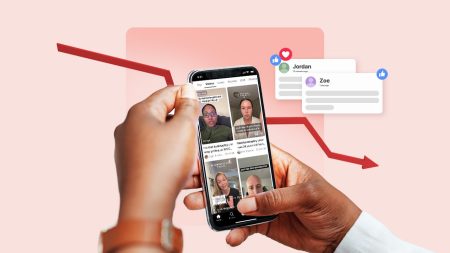Key takeaways
- Private student loans may offer higher borrowing limits and potentially lower interest rates compared to federal loans, but lack benefits like income-driven repayment plans and loan forgiveness.
- Private student loans may also be tax deductible, but they can carry the risk of not being discharged in bankruptcy and potentially persisting after death.
- The application process for private student loans is typically faster, but it’s important to carefully consider the terms and potential risks before borrowing.
Private student loans come with higher loan limits and — sometimes — lower borrowing costs compared to their federal counterparts. However, private student loans also have limitations. For example, you won’t get access to income-driven repayment plans, loan forgiveness options (if you’re eligible) and the other benefits that come with federal loans. You could also spend more than you anticipated in interest if you have a lower credit score.
Private student loans: Pros and cons
Private student loans can fill financial gaps when federal loans fall short. Here’s a closer look at the benefits:
Pros
- Can be cheaper than federal loans
- Higher borrowing limits (up to total cost of attendance)
- Fast application process
- Open to those who don’t qualify for federal student loans
- Potentially tax deductible, like federal loans
Cons
- No access to income-driven repayment plan or loan forgiveness
- Interest rates based on creditworthiness
- No federal subsidy
- Often not discharged through bankruptcy
- Deferment and forbearance more limited than federal loans
Pros of private student loans
Private student loans can help bridge the gap when federal aid falls short, allowing you to borrow up to your school’s cost of attendance and often providing competitive rates if you have good credit.
Can be cheaper than federal loans
If you’re an undergraduate student, you likely won’t find anything cheaper than a federal student loan, especially if you haven’t had the chance to build a credit history. The Department of Education’s graduate and parent student loans are pricier than its undergraduate loans.
If you or your cosigner have a solid income and a high credit score, a private student loan may offer you a better interest rate with no upfront fee. The annual percentage rate (APR) for private student loans can vary significantly based on the lender and terms.
The best private student loans start at under 4 percent. Depending on the situation, it’s good to compare what you might qualify for with private lenders and what the federal government offers.
Higher borrowing limits
If you’re attending an expensive school, you may not get the amount you need if you only go through the federal government for student loans. For instance, if you’re an undergraduate student, you can borrow between $5,500 and $12,500 per year, depending on your year in school and dependency status. The lifetime maximum is $31,000 for dependent students and $57,500 for independent students.
With private loans, however, you can typically borrow up to the total cost of attendance, minus any financial aid received, every year. It gives you far more flexibility to get the financing you need.
Fast application process
You must file the Free Application for Federal Student Aid (FAFSA) to access federal student loans. It typically takes up to an hour to complete and three to five days to process if you submit it online. The processing time for paper applications is seven to 10 business days.
By contrast, most private lenders feature a much more streamlined application process. You can generally apply online, upload requested income documentation and get approved and funded within just a few business days.
However, even if you plan to exclusively use private student loans, you should still file the FAFSA — it’s the best way to find out if you’re eligible for work-study, grants and other financial aid at your college.
Open to those who don’t qualify for federal student loans
Private loans can serve students who aren’t eligible for federal loans, such as:
- Students enrolled in fewer credits than the eligible amount
- International students with a U.S. citizen cosigner
- Borrowers who have reached federal borrowing limits
Private student loan requirements are different; the lender typically considers your finances and credit score, so they may be an especially helpful option if you do not qualify for other types of financial aid.
Potentially tax deductible
Both federal and private loan interest can be tax-deductible for students enrolled at least half-time. For private loans, up to $2,500 in interest each year may be tax deductible on your return. Lenders will issue a form 1098-E indicating how much interest you’ve paid over the previous year. Consult the IRS website or a tax professional for details.
Unique perks
Some private lenders offer added benefits, such as:
- Interest rate discounts for setting up automatic payments
- Scholarship programs for enrolled students
- Principal balance reduction for graduates who meet specific criteria
Cons of private student loans
Despite their benefits, private student loans come with significant risks:
No access to income-driven repayment or forgiveness
Unlike federal loans, private loans do not offer income-driven repayment plans or Public Service Loan Forgiveness. This can make them riskier for borrowers facing financial hardship or pursuing lower-paying careers in public service.
The only way to lower monthly payments for your private student loan is through refinancing your student loans to a lower interest rate or longer repayment term, but keep in mind that those with financial hardships or are lower income may find it hard to refinance.
Interest rates based on creditworthiness
In some cases, you can qualify for lower interest rates with private lenders than the federal government offers. However, private lenders offer a range of rates, and unless your income and credit score are stellar, you may end up with a much higher rate than you want.
It’s also important to note that the lowest private student loan interest rates are generally variable, fluctuating over time with market conditions. If you get a variable-rate loan, your monthly payment could increase.
Cosigner
Many private lenders allow you to apply with a cosigner, such as a parent, which can improve your chances of getting favorable terms.
No federal subsidy
Undergraduate students with financial needs may qualify for subsidized federal student loans. With these loans, the federal government pays your interest while you’re in school, as well as during future deferment periods. With private loans, though, there is no subsidy, so you’re on the hook for all the interest that accrues on your debt.
Often not discharged through bankruptcy
Private student loans generally cannot be discharged when a borrower files for bankruptcy. Due to an overhaul of the bankruptcy code in 1978, borrowers must now prove that their student loan payments cause “undue hardship” and prevent them from a minimum standard of living before the courts consider discharging this type of loan.
Deferment and forbearance more limited
Though these options are standard for most federal student loans, deferment and forbearance options are not guaranteed with private student loans. The availability of these payment pauses may depend on your lender’s unique terms.
Risk of overborrowing
You could access a private student loan equivalent to your total cost of attendance, minus other financial aid you’ve received. The higher loan amount gives you more cushion to cover your higher education expenses, but you risk borrowing more than you need. Plus, you could get stuck with steep monthly loan payments, including hefty interest that accrues over time.
Debt may persist after death
Your federal student loans are discharged when you die, which means your estate isn’t on the hook for outstanding balances. This isn’t always the case with private student loans, though. Most lenders write the debt off, but some may try to recoup what they’re owed from your estate. If the claims are successful, the inheritance left to your loved ones could be negatively impacted.
Keep in mind:
It’s important to remember the loan can also get passed off to your cosigner after you die.
Private student loans vs. federal student loans
In most cases, college students should turn to federal student loans first if they need help financing their education after free money options have been exhausted. With that said, most federal loans limit how much you can borrow each year and in total. Borrowers with excellent credit could find lower interest rates with private loans.
Review our full comparison below between the two loan options:
| Feature | Private student loans | Federal student loans |
|---|---|---|
| Income-driven repayment | ✓ | |
| Loan forgiveness | ✓ | |
| Interest rates | Set by lender based on credit | Set by Congress |
| Subsidized options | ✓ | |
| Deferment/forbearance | ✓ | |
| Borrowing limits | Up to full cost of attendance | Federal limits |
| Eligibility | Credit/income-based | No credit check usually |
| Tax-deductible interest | ✓ Up to $2,500 annually | ✓ Up to $2,500 annually |
Bottom line
Private student loans can be a valuable source of funding when federal aid isn’t enough to cover all educational costs. They may offer higher borrowing limits and lower rates for well-qualified borrowers. However, they may also come with significant risks.
Before choosing a private student loan, consider all repayment options, interest rates and lender policies. Federal loans typically provide better protections, such as income-driven repayment and forgiveness options.
Borrow only what you need and compare multiple lenders to find the best rates and terms for your financial situation.
Frequently asked questions
Read the full article here









